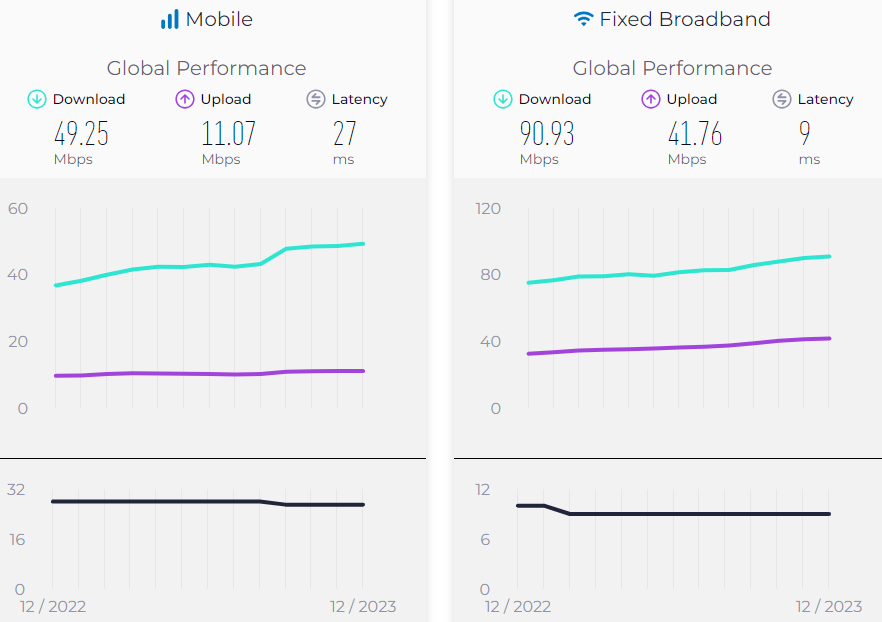The NBN’s huge fixed costs require that nearly every Australian household subscribe to the network in order for it to be financially viable.
However, as more homes abandon the NBN in favour of wireless options, including 5G mobile and Elon Musk’s Starlink satellite internet system, the NBN’s fixed expenses are shared across a diminishing subscriber base, eroding the company’s margins and putting upward pressure on pricing.
When NBN prices climb, more homes will switch to alternatives, and the cycle will repeat.
Hence, I consistently claim that NBN Co is facing a ‘death spiral’ of falling connections and rising prices.
Last week, we reported that tens of thousands of Australian households quit the NBN last year amid hot competition from wireless 5G broadband and Elon Musk’s Starlink.
Who can blame them when Australia’s fixed-line broadband ranks a poor 93rd in the world, slower than occupied Palestine (76th place), war-torn Ukraine (67th place), bankrupt Argentina (69th place), and Mongolia (74th place).

By contrast, Australia’s mobile broadband ranks a solid 26th in the world.
A typical 50 Mbps download plan on the NBN costs around $85 per month, whereas Optus and TPG provide Fixed Wireless Access 5G broadband at the same speed for $10 to $15 less.
Starlink uses a constellation of hundreds of low-orbit satellites to connect individuals in distant locations around the world, including the majority of Australia.
It was released in Australia in 2021 and offers unlimited data for $139 per month plus a hardware cost of roughly $599, with speeds comparable to the NBN’s 100-megabit plans.
As a result of this competition, a significant share of households are shifting away from the NBN to alternatives, and this trend is expected to continue as the 5G and Starlink footprints expand.
This shrinkage of market share has prompted NBN Co to shrink its workforce by about 10% over the past year to 4500 employees in a bid to rein in costs amid worsening financial losses.
Statutory losses at the government-owned company increased by 57% to $696 million in the six months ended December due to rising prices for leasing equipment such as Telstra telecommunication ducts, as well as higher debt and tax expenses.
The economics of the NBN are poor, and there are no easy solutions to its ‘death spiral’ problem.
As more households quit the NBN in favour of wireless alternatives, the NBN’s fixed costs will be distributed among a smaller user base, driving up prices further and prompting more users to leave the service.

